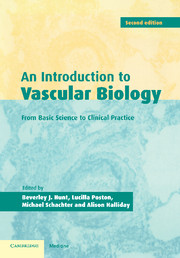11 - Magnetic resonance imaging in vascular biology
Published online by Cambridge University Press: 07 September 2009
Summary
Introduction
For any individual the way in which his or her vascular system responds in health and disease is unique. The ability to visualize the normal and abnormal processes of vascular biology on an individual basis is therefore of paramount importance. It is clear that the vascular system is much more than a passive conduit for the transport of blood, so the means by which it is imaged must respond by providing information relevant to its function and dysfunction. The ideal imaging technique would be one that is noninvasive and repeatable, thus allowing longitudinal study without influencing the system under investigation. It should provide localized information about normal morphology and physiology as well as being able to detect early abnormalities and overt disease states. By so doing, imaging has the potential to reveal normal vascular biology within an individual at a specific anatomical site; provide a means by which early dysfunction can be detected, i.e. screening for disease; and be an accurate technique for the detection and characterization of established disease. Conventional imaging techniques have concentrated on visualizing the lumen of blood vessels, defining the resultant narrowing or occlusion brought about by disease. In an attempt to understand better the process of vascular disease it is necessary to visualize the site of disease and the interacting processes that occur there, and imaging techniques must respond to this challenge.
Imaging
Catheter angiography
Catheter angiography allows great access to the vascular system, providing detailed information regarding the lumen of vessels (Figure 11.1).
- Type
- Chapter
- Information
- An Introduction to Vascular BiologyFrom Basic Science to Clinical Practice, pp. 259 - 282Publisher: Cambridge University PressPrint publication year: 2002



